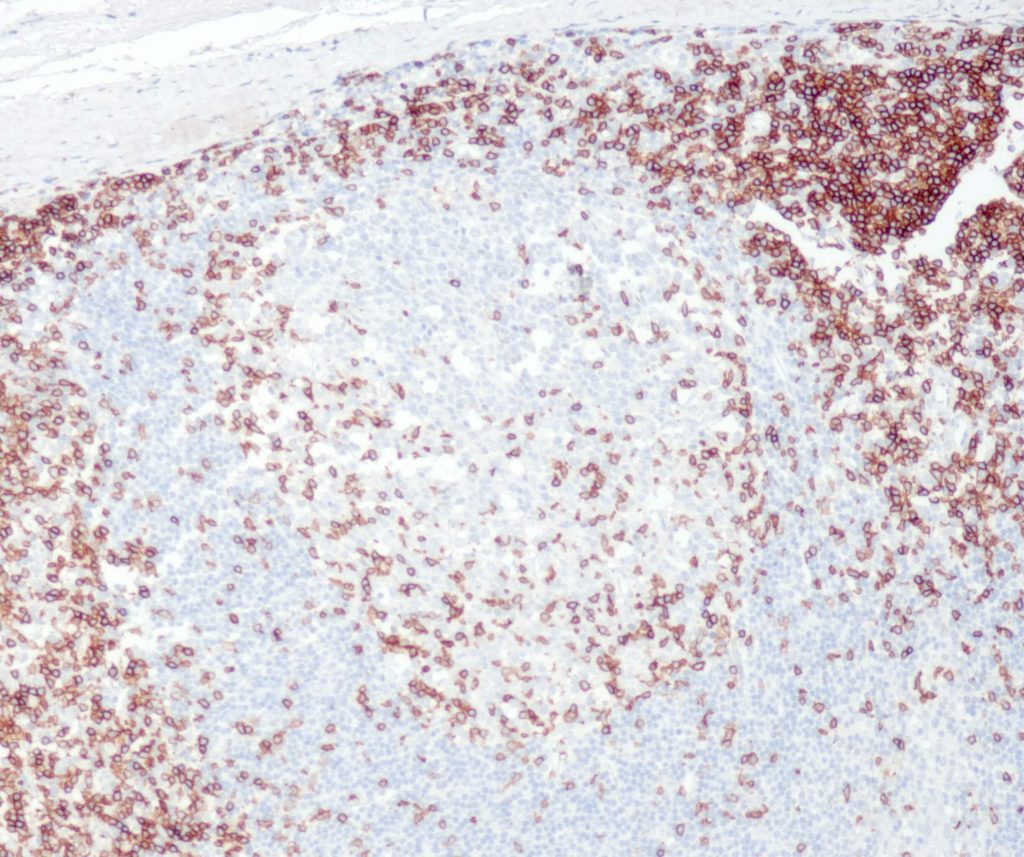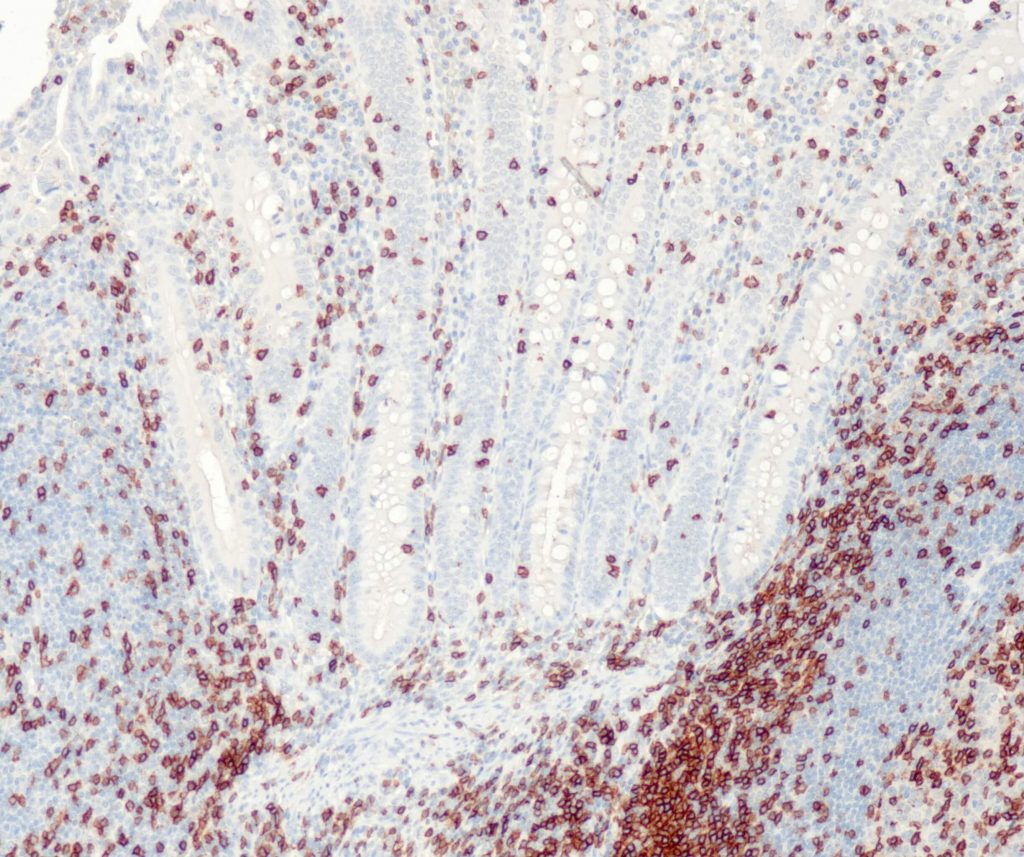[1] Wang B, She J, Salio M et al. (1997): CD3-epsilon overexpressed in prothymocytes acts as an oncogene. Mol Med. 3(1):72-81.
[2] Termuhlen AM (2017): Natural killer/T-cell lymphomas in pediatric and adolescent patients. Clin Adv Hematol Oncol. 15(3):200-209.
[3] Li Y, Chen S, Yang L et al. (2011): Change in expression pattern of TCR-CD3 complex in patients with multiple myeloma. Hematology. 16(3):143-50.
[4] Chen S, Zha X, Yang L et al. (2011): Deficiency of CD3gamma, delta, epsilon, and zeta expression in T-cells from AML patients. Hematology. 16(1):31-6.
[5] Huang L, Chen S, Zha X et al. (2012): Expression feature of CD3, FcεRIγ, and Zap-70 in patients with chronic lymphocytic leukemia. Hematology. 17(2):71-5.
[6] Mason DY, Cordell J, Brown M et al. (1989): Detection of T-cells in paraffin wax embedded tissue using antibodies against a peptide sequence from the CD3 antigen. J Clin Pathol. 42(11):1194-200.
[7] Sommers CL, Dejarnette JB, Huang KJ et al. (2000): Function of CD3 epsilon-mediated signals in T-cell development. Exp Med. 192(6):913-19.
[8] Vilches-Moure JG and Ramos-Vara JA (2005): Comparison of rabbit monoclonal and mouse monoclonal antibodies in immunohistochemistry in canine tissues. J Vet Diagn Invest. 17(4):346-50.
[9] Oettgen HC, Kappler J, Tax WJ and Terhorst C (1984): Characterization of the two heavy chains of the T3 complex on the surface of human T lymphocytes. J Biol Chem. 259(19):12039-48.
[10] Ziegler S, Weiss E, Schmitt AL et al. (2017): CD56 Is a Pathogen Recognition Receptor on Human Natural Killer Cells. Sci Rep. 7:6138.
[11] Hu B and Oki Y (2018): Novel Immunotherapy Options for Extranodal NK/T-Cell Lymphoma. Front Oncol. 8:139.




